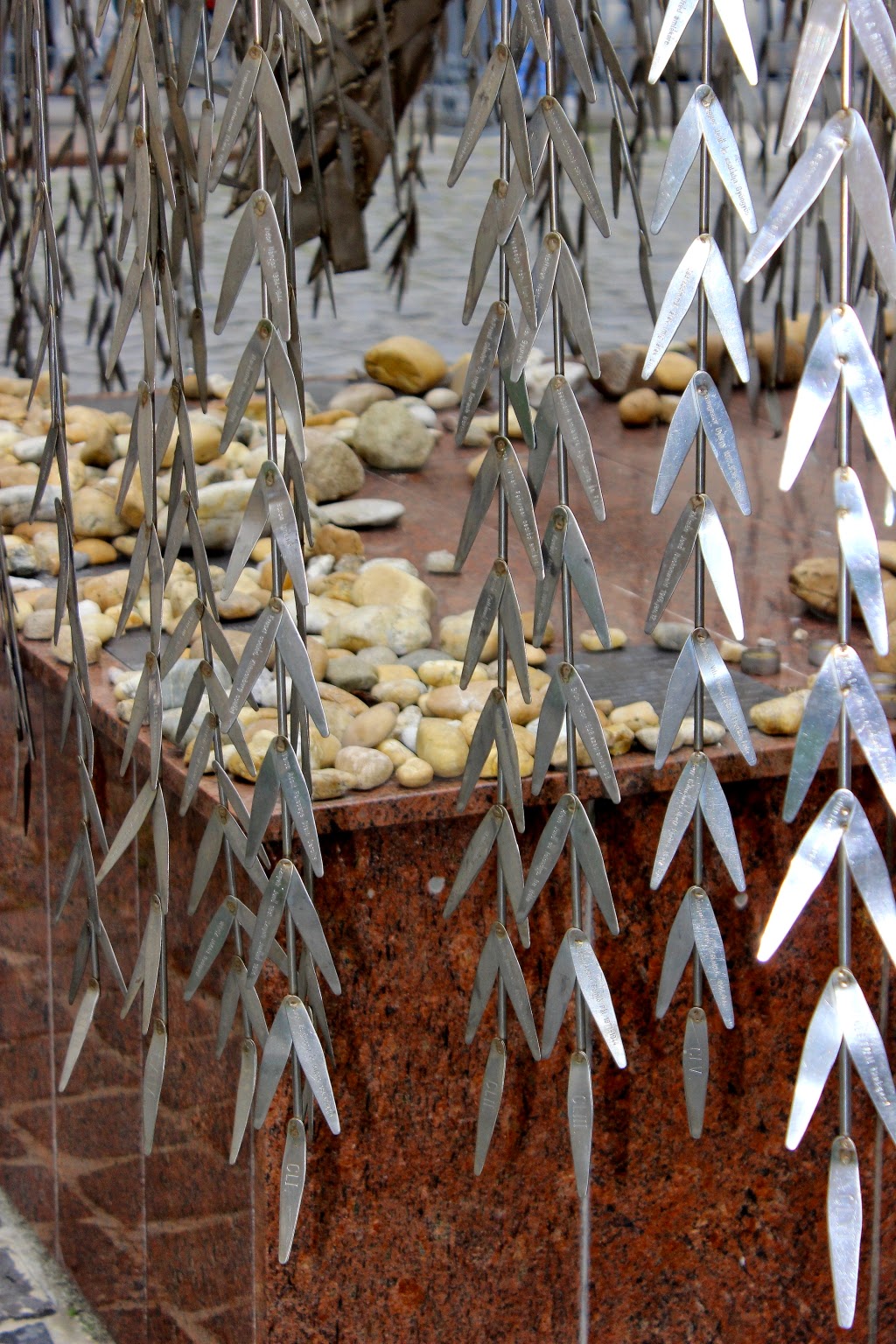Today's excursion consisted of a visit to the Dohany Street Synagogue and the Jewish District. My first reactions to the Synagogue was more or less, "HOLY COW!" The building was absolutely beautiful (like mostly all the buildings in Budapest). I later found out that this specific Synagogue is the largest in Europe, and the Second largest worldwide (with New York taking the prize). The Synagogue can hold 3,000 people and is beautifully decorated from head to toe. The Synagogue was built between 1854 and 1859, which is a miraculously short time considering its lavishness and the era it was built in.
Unfortunately, the Synagogue's history has not always been happy one. It was bombed in 1939 by the pro-Nazi Hungarian Party, the Arrow Cross Party. It suffered severe damaged, and was further left damaged during the Communist regime following World War II. Thankfully restoration began in 1991, and with the help of some generous donors, restoration was complete in 1998.
Adjoining the Synagogue is a Jewish Museum, which holds various historical Jewish relics and a Holocaust museum that focuses on Hungarian Jewish Holocaust victims. The relics were fascinating, and have survived a great deal. Many relics were hidden during WWII by two museum workers that hid all the Jewish relics from Nazi raids. After the Museum was reopened after WWII and the Communist Regime, the Museum faced a robbery in 1991 in which almost all the relics were stolen. With the help of the CIA, Hungarian government, and various other governmental and private organizations, they were able to locate the relics in a small area of Romania and return them home to the museum. After we looked at the relics we entered the Holocaust room, which was a striking contrast to the rest of the museum. The rest of the museum is light and colorful, but the Holocaust room was dark and somberly (and for good reason). The room was filled with old black and white photos, which I absolutely loved. My favorite parts of the room were of the Anti-Semitic propaganda and all the pictures that depicted the horrors of the Holocaust more than a History book could. Although the Holocaust room did not leave me with a warm and fuzzy feeling, it was a good experience and I was thankful I got to see the memorial.
The Synagogue also has an adjoining Jewish Cemetery and Memorial Park. The Synagogue was actually part of the Jewish Ghetto that served as shelter for a lot of people, albeit not a good one. Over 2,000 people died in the Ghetto between 1944-1945 alone and are buried in the courtyard of the Synagogue. Although they died terrible deaths, it warms my heart a little to know they have a beautiful resting place where thousands can walk by and honor them each and every day. The Memorial Park holds a weeping willow sculpture made out of metal that represents the 400,000 Hungarian Jews that were killed in the Holocaust. This somber memorial lays next to a happier one, with various names of non-Hungarians who helped saved thousands of Hungarian Jews.
The Synagogue, Museum, Memorial, and Cemetery was a great way to learn more about Hungarian Jewish History, and it was rewarding to see the location where some of this history actually happened. Overall it was a rewarding experience. While learning about the Holocaust and WWII in History classes, most of them focus on Jews that were persecuted in Germany, Poland, and France. Many history classes do not even mention Hungary, and to be honest before this trip I was not even aware that Hungary suffered just as horribly as other countries (which I must say as a history major makes me a little ashamed). It makes me sad to know that thousands of these Hungarian Jews are largely forgotten by the world, but coming to Hungary and seeing the Synagogue, it is nice to know many Hungarians are aware of this dark part of their history and have done a great job and honoring them through the Synagogue and Memorial.
Here are some pictures I took today!
Nazi Occupation in Hungary:
Below shows the quota for expelling Jews by country:
Thousands of Hungarian Jews were forced to live in Ghettos, which are depicted in the picture below:
Semitic Hungarian Propaganda:
Approximately 2,000 Hungarian Jews are buried adjacent to the Synagogue. Many of them are unidentified.
This particular sculpture is a memorial to the Hungarian Jews that lost their lives in the Holocaust. Each individual blade on the willow tree (which is made of metal) has a name or identification number of a person that was murdered during the Holocaust. Powerful stuff.
These are some of the more prominent non-Hungarian people that devoted their lives to saving thousands of Jews. Thanks to these people, and many more not listed here, approximately 250,00 Hungarian Jews survived. (The first guy is Swedish, Tasker).





















No comments:
Post a Comment